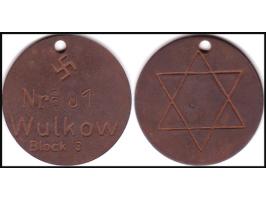first sale
This auction features Worldwide Postal History Especially Holyland Foreruners Postcards And Covers, Large Collection Of Gold Coins From All Over The World. And Huge Amount Of Banknotes. Other Interesting Items Included As Well.
- Art (33) Apply Art filter
- Autographs (12) Apply Autographs filter
- Banknotes Palestine & Israel (24) Apply Banknotes Palestine & Israel filter
- British Mandate in Palestine (101) Apply British Mandate in Palestine filter
- Coins & Medals (82) Apply Coins & Medals filter
- Collections (38) Apply Collections filter
- Holocaust & Anti Semitism (79) Apply Holocaust & Anti Semitism filter
- Holyland Forerunners (125) Apply Holyland Forerunners filter
- Judaica (28) Apply Judaica filter
- Minhelet Ha'am (28) Apply Minhelet Ha'am filter
- Numismatic (68) Apply Numismatic filter
- Numismatic Collections (4) Apply Numismatic Collections filter
- Postcards (17) Apply Postcards filter
- The State Of Israel (177) Apply The State Of Israel filter
- Thematic (39) Apply Thematic filter
- World Banknotes (26) Apply World Banknotes filter
- World Wide Philately (191) Apply World Wide Philately filter
LOT OF 7 IDENTIFICATION BADGES JEWS WERE FORCED TO WEAR UNDER THE BNAZIS DURING WORLD WAR II.
1. Bulgaria, Poland, Lithuania, Hungary, Greece. 2. Bulgaria (Button). 3. Germania, Alsace, Bohemia-Moravia. 4. France. 5. Holland. 6. Belgium. 7. Poland. East+Upper-Silesia.
The figure above shows a chart with the prisoner markings used in German concentration camps. The list of vertical mark categories for the following types of prisoners: political, professional criminal, emigrant, Bible Students (such as Jehovah's Witnesses were then known), homosexuals, and other nationalities. The horizontal categories begin with the basic colors, and then show the recidivists, Jews, Jews who have violated racial laws for having sex with Aryans and Arians who have violated racial laws for having sex with Jews. In the lower left corner, P is for Poles and T for Czechs. The remaining symbols give examples of mark patterns.
Nazi concentration camps during World War II had a set of geometric figures in the form of triangles to help identify the type of person who carried it. Some historians say inverted, however, it is with respect to color, inclinations and overlapping figures that were based the criteria for classifying the segregated in their respective fields.
JUDAICA Concentration Camps Wulkow Forced Labor Badge (38mm.) A circular metal disc engraved with a "Nr 581, a Swastika, and Block 3" on the face and a "Star of David" on the reverse. These badges were worn by internees as a type of lassez paisser. Rare and seldom available. Estimate US$250-350
JUDAICA Concentration Camps Wulkow Forced Labor Badge (38mm.) A circular metal disc engraved with a "Nr 61, a Swastika, and Block 3" on the face and a "Star of David" on the reverse. These badges were worn by internees as a type of lassez paisser. Rare and seldom available. Estimate US$250-350
JUDAICA Concentration Camps Dachau Forced Labor Badge (38mm.) A circular metal disc engraved with a "Nr 1242, a Swastika, Dachau and Block 2/5" on the face and a "Star of David" on the reverse. These badges were worn by internees as a type of lassez paisser. Rare and seldom available. Estimate US$250-350
A "REPRODUCTION" OF THE KOVNO GHETTO'S JEWISH GHETTO POLICE ARMBAMD." SLOBODKA GHETTO 1942" YEARBOOK. An armband in the ghetto is not just a badge, a part of a uniform. In the days of "actions." people's lives were seved only thanks to ther arrmbands. Thus, the ghetto residents stormed the Altestenrat demanding tarmbands, and ther value inflated. But in the "Great Action" of October 28, 1941, many ghetto residents died tragically in ther arrmbands. A "reproduction" of the armband for the council of elders (altesetenrat) welfare office social wokers.
1941 "JUDENSTERN" AS WORN BY THE JEWS IN GERMANY INCLUDING ALSACE & BOHAMIA - MORAVIA, FROM 6 YEARS OLD - 1st. SEPTEMBER 1941. WITH DOTTED TRIM LINE. AS ISSUED IN PACKETSD BEFORE TRIMMING.
1942 "JUDENSTERN" AS WORN BY THE JEWS IN FRANCE AS FROM JUNE 1942. By the beginning of 1942, the Germans had begun to arrest French Jews and send them to concentration camps in other places under German control, they forxed Jews to sew 'tellow star on ther clothing from occupation on November 11, 1942. The badges were distributed out of the local police stations; one textile coupon secured three badges. In a letter dated May 5 1942, from Captain Theodor Danneker, the Chief of Jewish Affairs of the Gestapo in Paris, to the Director of the Foundries at Deberny et Peignot, is included two impressions of the printing blocks used to make the 400,000 stars orderedf to be made. An order outlning discriminatory measures against the Jews issud by the commander of the SS in France.
CARDBOARD "Z" BADGE. (Also seen made in metal) - worn by Jews ("ZIDOV") in nazi Croatia. Most probably made out of cardbord, due to shortages of metal off-cuts,due to metal being used mainly for ear related industty. How this "Z" badge was fastened to ones clothes, i have yet to be informed about. Maybe by safety pin or by sewing it on. This and the stamped aluminum Jewish badge was worn after May 1941 in Zagreb, Yugoslavia. All Jews were required to register at the "Opitsa" (Jewish Community Center) were thy receved these badges. All the abult Jews were required to wear them when in public.
"ZIDOV" ARMBAND AND YELLOW PATCH - WORN BY THE JEWS OF YUGOSLAVIA. This armband and yellow patch as issued and worn in Yugoslavia after the German occupation in 1941. Other varieties existed without a Jewish Stare, and also those with a Jewish Star and the words "JUDE" and "ZIDOV" printed twice around the star.













